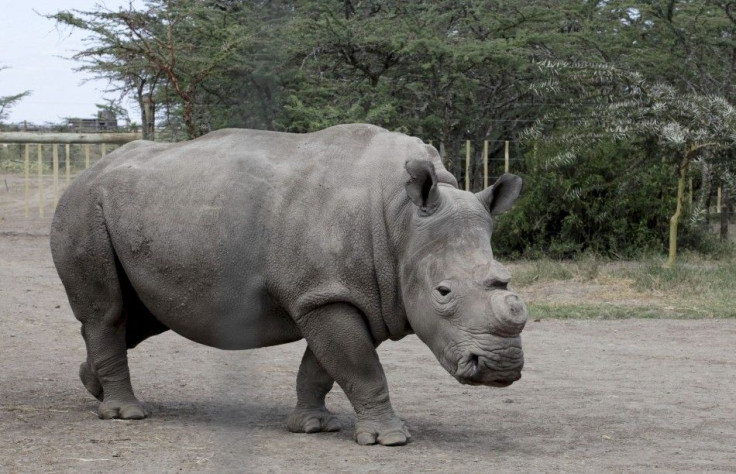Stem Cell Breakthrough to Provide Lifelines for White Rhinos and Drill Monkeys

Scientists have created the first artificial embryonic stem cells from two endangered species, a breakthrough that could potentially save animals in danger of extinction.
Using frozen cells stored at the San Diego Zoo, Jeanne Loring PhD, professor of developmental neurobiology at Scripps Research and her collaborators have created stem cells from frozen skin cells of two such endangered species-- the silver-maned drill monkey and the northern white rhinoceros.
The northern white rhino is one of the most endangered animals on Earth, while the drill - a west African primate - is threatened by habitat loss and hunting. With countless endangered animals teetering on the brink of extinction throughout the world, the work of preservation has never been more important.
Scientists report in Nature Methods that the stem cells of these two species could be converted into different types of body cells.
The best way to manage extinction is to preserve species and habitats but that is not always working, Oliver Ryder, director of genetics at the San Diego Zoo and co-leader of the study, said in a statement.
Stem cell technology provides some level of hope that they won't have to become extinct even though they have been completely eliminated from their habitat.
This kind of science entails a fair amount of trial and error, and the researchers expected it would work with the drill because there is lots of experience with primates. But the rhino was a different matter.
Almost four decades ago, in 1972, conservationists in San Diego began freezing skin samples from endangered species in the hopes that science would come up with a way to utilize the cells to pull these species from the brink of extinction, according to a MIT Technology Review report.
The Frozen Zoo in San Diego has skin cells and other tissue samples from more than 800 species.
And five years ago, Ryder decided to contact Loring about the possibility of using the samples from the Frozen Zoo to generate and store stem cells. He felt the frozen skin cells from threatened as well as extinct species from the Frozen Zoo could be used as a starter kit for new life.
At the time, although researchers had been working with stem cells from embryos, scientists had not yet developed techniques for reliably inducing normal adult cells to become stem cells. But the technology arrived soon after, and scientists now accomplish this feat, called induced pluripotency, by inserting genes in normal cells that spark the transformation.
While Loring's team met with Ryder in early 2008, they realized that these newly emerging techniques might be applied to endangered species. Post-doctoral fellow, Inbar Friedrich Ben-Nun, PhD, set out to systematically explore the possibilities.
According to BBC, the stem cells were made from skin by a process of re-programming. In this process the retroviruses and other tools of modern cell biology are used to restore the cells to an earlier stage of development. At this stage they are said to be pluripotent, meaning they can be induced to form different kinds of specialized cell such as neurons and cartilage.
Studies using the stem cell approach are in progress to cure human diseases. However, scientists hope to be able to use stem cells to create eggs and sperm, which could be then used for breeding and boosting the genetic diversity of endangered species.
Either induced sperm cells could be combined with the eggs from living animals through in vitro fertilization or both eggs and sperms might be generated from stem cells and the resulting embryos could be planted in live host animals.
Scientists believe that this technique would be much more reliable than cloning techniques where the frequency of success is very low, Loring said.
I think that work would be a lot easier ethically with endangered species than with humans, Loring said.
The northern white rhinoceros (Ceratotherium simum cottoni) is a highly endangered species with only seven specimens remaining in existence. All seven are in captivity with two in San Diego.
The drill (Mandrillus leucophaeus) is closely related to the baboons and even more closely to the mandrill. Drills are found only in Cross River State, Nigeria; South Western Cameroon; and on Bioko Island, part of Equatorial Guinea.
Drills are among Africa's most endangered mammals, and are listed by the IUCN (International Union for the Conservation of Nature) as the highest conservation priority of all African primates. Drill numbers have been declining in all known habitat areas for decades as a result of illegal commercial hunting, habitat destruction, and human development.
© Copyright IBTimes 2024. All rights reserved.





















